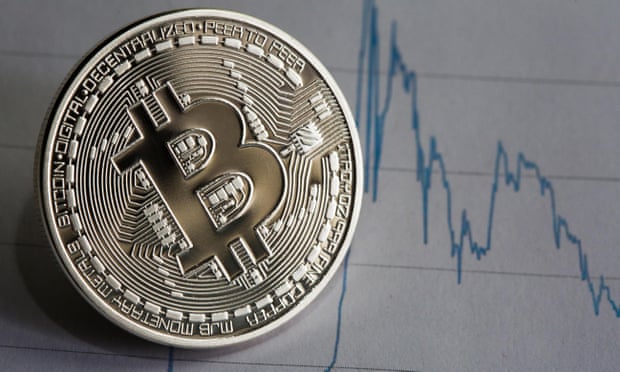Bitcoin’s electricity usage is enormous. In November, the power consumed by the entire bitcoin network was estimated to be higher than that of the Republic of Ireland. Since then, its demands have only grown. It’s now on pace to use just over 42TWh of electricity in a year, placing it ahead of New Zealand and Hungary and just behind Peru, according to estimates from Digiconomist. That’s commensurate with CO2 emissions of 20 megatonnes – or roughly 1m transatlantic flights.
That fact should be a grave notion to anyone who hopes for the cryptocurrency to grow further in stature and enter widespread usage. But even more alarming is that things could get much, much worse, helping to increase climate change in the process.
Burning huge amounts of electricity isn’t incidental to bitcoin: instead, it’s embedded into the innermost core of the currency, as the operation known as “mining”. In simplified terms, bitcoin mining is a competition to waste the most electricity possible by doing pointless arithmetic quintillions of times a second.
Q&AWhat is bitcoin?
Show

Bitcoin is a 'cryptocurrency' – a decentralised tradeable digital asset. Invented in 2008, you store your bitcoins in a digital wallet, and transactions are stored in a public ledger known as the bitcoin blockchain, which prevents the digital currency being double-spent.
Cryptocurrencies can be used to send transactions between two parties via the use of private and public keys. These transfers can be done with minimal processing cost, allowing users to avoid the fees charged by traditional financial institutions - as well as the oversight and regulation that entails. The lack of any central authority oversight is one of the attractions.
This means it has attracted a range of backers, from libertarian monetarists who enjoy the idea of a currency with no inflation and no central bank, to drug dealers who like the fact that it is hard (but not impossible) to trace a bitcoin transaction back to a physical person.
The exchange rate has been volatile, with some deeming it a risky investment. In January 2021 the UK's Financial Conduct Authority warned consumers they should be prepared to lose all their money if they invest in schemes promising high returns from digital currencies such as bitcoin.
In practice it has been far more important for the dark economy than it has for most legitimate uses. In November 2021 it hit a record high of more than $68,000, as a growing number of investors backed it as an alternative to other assets during the Covid crisis.
Bitcoin has been criticised for the vast energy reserves and associated carbon footprint of the system. New bitcoins are created by “mining” coins, which is done by using computers to carry out complex calculations. The more bitcoins that have been "mined", the longer it takes to mine new coin, and the more electricity is used in the process.
The more electricity you burn, and the faster your computer, the higher your chance of winning the competition. The prize? 12.5 bitcoin – still worth over $100,000 – plus all the transaction fees paid in the past 10 minutes, which according analysts’ estimates is another $2,500 or so.
This is a winner-takes-all game, where the prize is guaranteed to be paid to one, and only one, miner every 10 minutes. Burning more electricity increases your chances of winning, but correspondingly decreases everyone else’s – and so they have a motivation to burn more electricity in turn.
The economic outcome of all of this is laid bare in a Credit Suisse briefing note published on Tuesday: the network as a whole will reinvest almost all the bitcoin paid out as mining rewards back into its electricity consumption. (Credit Suisse’s ballpark figure assumes that 80% of the expenses of bitcoin miners are spent on electricity).
At current prices for electricity and bitcoin, the bank calculates a maximum profitable power draw of bitcoin at around 100TWh – two-and-a-half times higher than its current rate. Any higher and the miner will lose money.
But it gets worse. If bitcoin were to become the global currency its supporters hope it will, its pricewould increase. And if its price increases, so too does the amount of electricity miners can afford to burn.
Credit Suisse estimate that a bitcoin price of $50,000 – five times its level as I write – would increase the electricity consumption tenfold. And at a bitcoin price of $1.1m, it would be profitable to use almost all the electricity currently generated in the world for mining.

The bank views the latter prospect as not worth worrying about, for two reasons: it doesn’t think bitcoin will ever reach that value, since the competition from other cryptocurrencies is too strong; and it thinks that power consumption of mining will fall over time as better technologies are used for miners. Credit Suisse explicitly compares bitcoin to marijuana cultivation and data centres, two other industries that once sparked fears they would have huge power draws.
I’m not convinced we should be so blasé. It’s true that bitcoin may face competition from other cryptocurrencies, but almost all its competitors use essentially the same wasteful mining system it does. If they took over pole position, it would be out of the frying pan and into the fire. (One major competitor, Ethereum, has long discussed moving to a “proof-of-stake” system, which would radically change its power use for the better, but the switchover still hasn’t happened. It’s currently scheduled for mid-2018.)
And while marijuana farmers and data centre engineers managed to reduce their power demands, the fundamentally wasteful nature of bitcoin mining means there’s no easy technological solution coming.
Mining computers have become more power-efficient, with the latest generation of machines able to do roughly 20% more useless calculations per MWh of electricity. But in the zero-sum game of bitcoin mining, that just means a miner can afford to run more machines at the same time, leaving their power usage roughly stable.
In the end, there’s only one real reason why bitcoin’s energy consumption would fall, and that is if the price of the currency drops.
On that point, there is good news to be had: bitcoin is down to just over $10,000, almost half the level it was trading at a month ago. If it continues to fall, we might be able to return to worrying about more conventional sources of climate change, like the automotive industry, plane travel, and Donald Trump.

